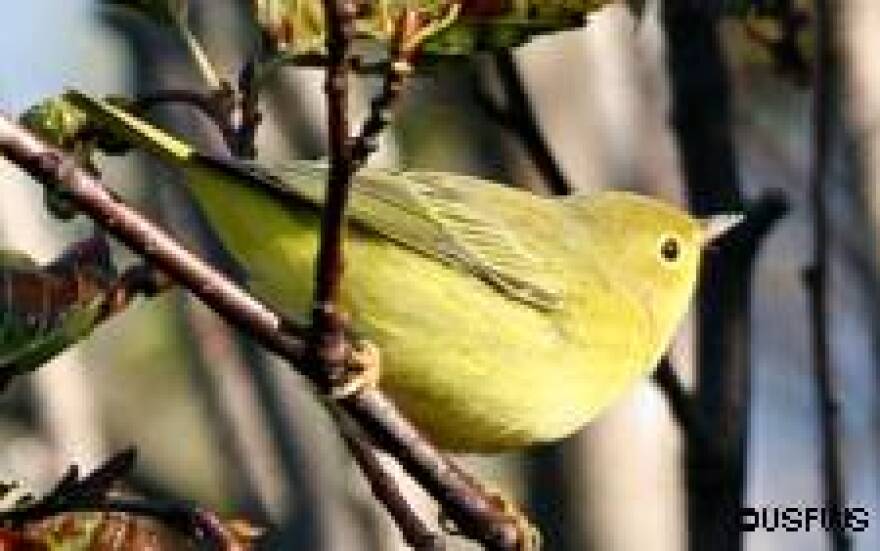A new study in the journal Science finds there are genetic differences in yellow warblers that live in different parts of the U.S. and Canada, and some of those populations seem to be more genetically vulnerable to climate change than others.
Rachael Bay is the lead author of the study, at the University of California-Davis.
“We did some genome sequencing and we found a bunch of genes that seem to be associated with whether yellow warblers live in warmer or drier or hotter or colder areas," she says.
“What we then did was to use climate projections to see whether these yellow warbler populations would be able to adapt to future climate change. So we were actually able to map how much yellow warbler populations across the U.S. would need to adapt to future climate change.”
Bay says in most places in their genome, yellow warblers that live in different regions of the country are the same.
“But in some places you’ll have differences. So what we’re looking for are differences that are related to climate,” she explains.
She says they found yellow warblers seem to be the most sensitive to changes in precipitation. So warblers that spend their summers in certain areas of the country could have a harder time adapting.
“We saw this sort of strip of vulnerability in the Rocky Mountains, that was the most vulnerable part of the country, and then we saw some sort of patchy vulnerability both on the west and east coasts while the middle of the country seems to be much less vulnerable,” says Bay.
Bay says she hopes this approach could give wildlife managers more specific information to protect the most vulnerable species.





